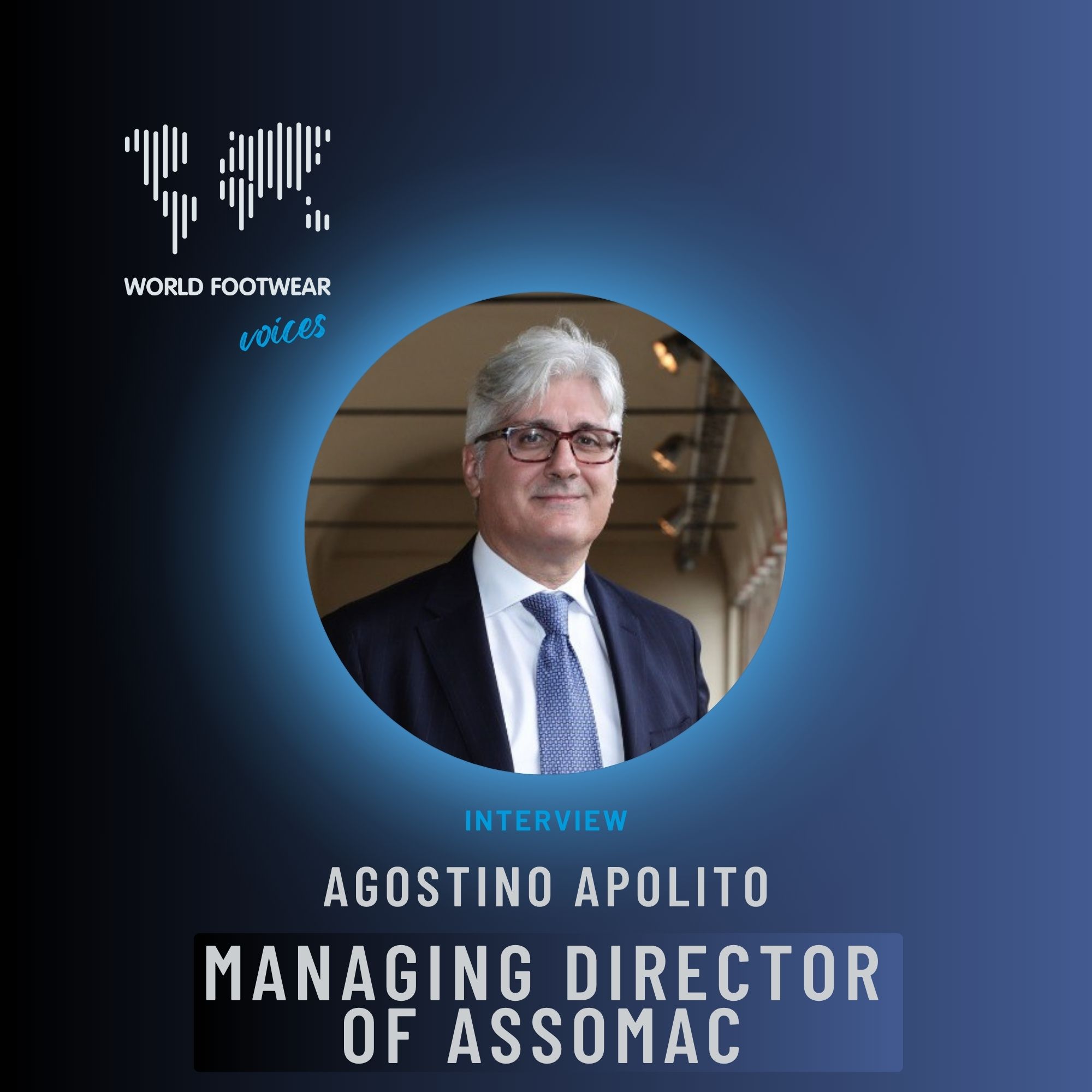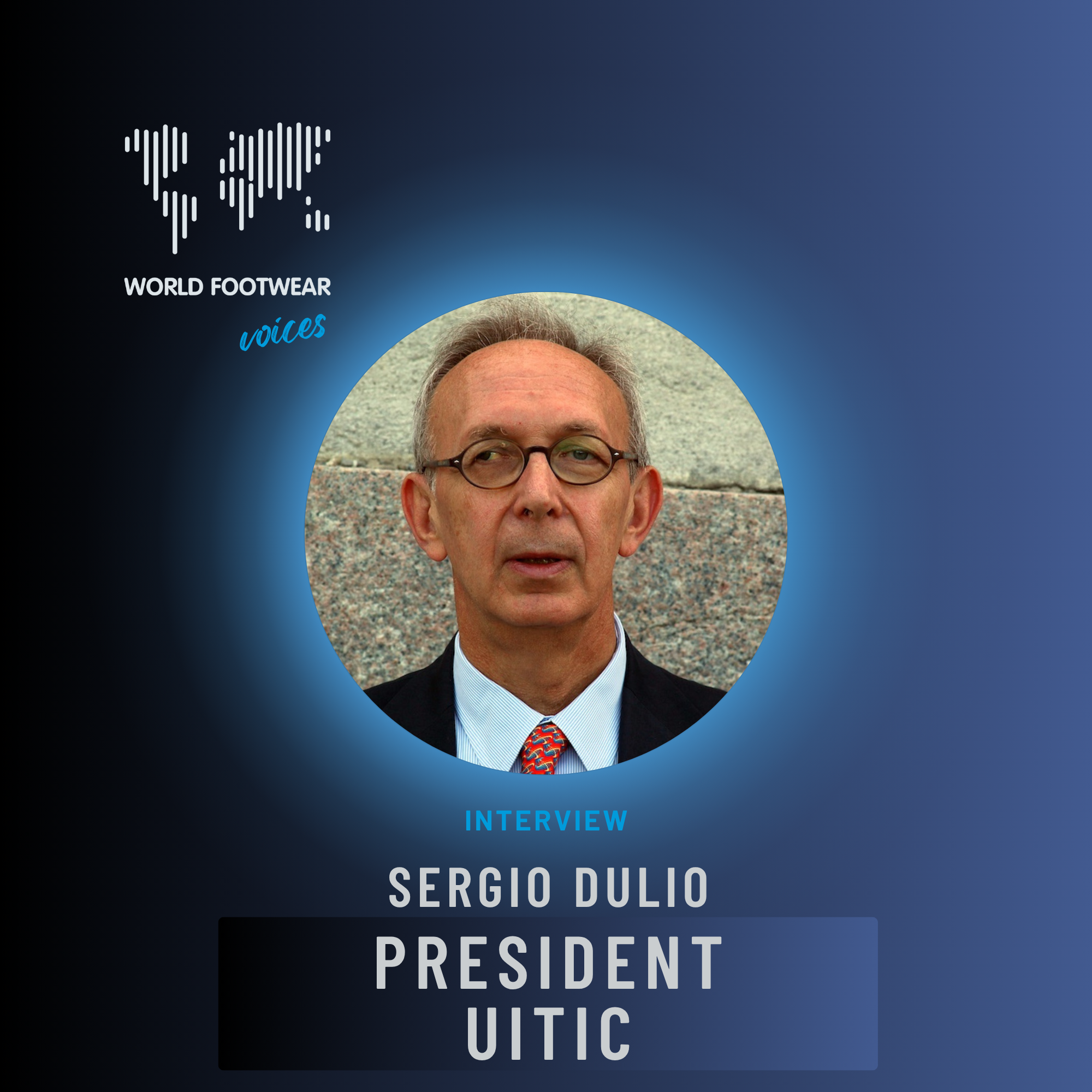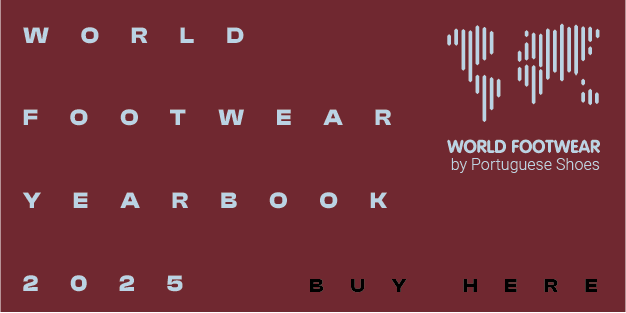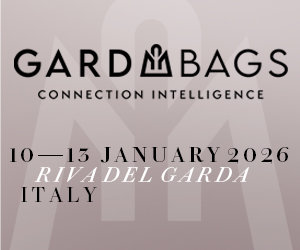Consumer-to-Consumer and a big shift in work culture: how Nicoline Van Enter (Footwearology) sees AI
During the 22nd UITIC Congress in Shanghai in September, we had the opportunity to speak with Nicoline Van Enter, CEO and founder of Footwearology, who shared some valuable insights about AI with us. Watch the video with the converstation now
Joana Vaz Teixeira_WorldFootwear: Hello, we are here in Shanghai at the UITIC Congress, and I have Nicoline Van Enter from Footwearology with me. We are going to have a conversation about AI. Thanks for being here with me.
Nicoline Van Enter Van Enter_Footwearology: Thank you for having me. Very excited.
Joana Vaz Teixeira_WorldFootwear: So, this morning, in your presentation, you were talking about AI-driven systems in the footwear industry. Do you want to elaborate a little bit, so that our viewers understand a little bit more?
Nicoline Van Enter_Footwearology: My goal was to discuss AI from a future perspective and demonstrate how it will work in analyzing complex data. That’s basically what AI can do better than we can. And how that eventually could even turn into autonomous systems that could develop footwear by themselves. That was my thought experience. Would it be possible to have an AI that autonomously would create that? What kind of system would require that? And how would you build such a system? And where are humans in that system?
Joana Vaz Teixeira_WorldFootwear: Where in the footwear value chain do you see AI as being able to deliver most transformative impact right now? I mean, if we think from design to retail, where do you think we have more potential in terms of IA implementation?
Nicoline Van Enter_Footwearology: I think it will be everywhere. I think the whole goal is that it’s not going to be just one specific part of the supply chain of the industry. It’s going to be throughout the supply chain. But it’s also because of new technologies in manufacturing that we can do that. For instance, have a system that would be able to collect and analyse a lot of data that we don’t have now or don’t look at now or don’t combine in that way, and then to actually be able to create the shoes within a very short period specific for the consumer. And it could even happen, what I think is the most exciting part, is the end part that I was talking about. The consumer to consumer. We’re so used to thinking - in any industry, not just footwear - we are the companies, we provide, and we initiate that process of design for the consumer. But now that the consumer also has AI, it could also be them initiating it and taking the initiative from their side, with their AI applications, to create shoes. I had an example at the end of my presentation where you see a woman behind a computer, she enters something in the agenda and immediately her virtual assistant says, “I’ll make sure that you will have shoes, an outfit for that event”. That’s also to say that you need to go to a wedding or something, or it’s your birthday… Then, automatically it could be like, even if it’s your birthday, if it’s a month before, your system could already signal, “In a month it’s your birthday, we need to make sure that you have, for instance, good shoes for then”. Analyse what you already have in your wardrobe, analyse what things you are interested in at that moment. What designers do you admire? What might be available online? What are different brands promoting? And then choosing out of that. Either purchasing something for you or even saying I generated a design for you based upon what I know about you. And it’s going to be made, and you’re going to have it for your birthday. And that’s a very different way of creating things than we have now.
Joana Vaz Teixeira_WorldFootwear: Absolutely. I think it’s almost like a mindset that is completely different from what we have our days. I think that kind of links to another thing that I wanted to discuss with you, which is related to the fact that we have all the data that we have been collecting, and we still do…
Nicoline Van Enter_Footwearology: And also a lot that we don’t.
Joana Vaz Teixeira_WorldFootwear: Exactly. How do you think this will be important for brands to analyse their products, analyse their potential clients and kind of make sure that they are more competitive? Is AI playing a really important role here? Is this the role for AI?
Nicoline Van Enter_Footwearology: I think it’s the main role for AI because it’s based upon data. It can analyse big amounts of data that we cannot. This is also the biggest hurdle for companies because we are not so used to having systems that collect data. Either it’s us entering data - people might have a PLM system indeed that they have a lot of data in - But what I find a lot working with big companies is that they have a lot of data, but it’s very siloed. The departments don’t communicate with each other. For instance, I was with a really big brand in the US giving a training, and I was asking, “Could we feed the information coming from your e-commerce from your website directly into the AI?” Design was like, “We don’t actually really see the results of e-commerce, that’s another department”. They had to go get somebody else from another department. It ended up being a really interesting discussion, but indeed the hurdle was how to structure management-wise so that that information becomes available and is integrated and used throughout the company. That’s also why in my presentation, I showed it like a whole organism, with all these roots, with information coming together into one system. That’s what we need, but it’s not what we have. This is where the biggest hurdle is for all companies to first set that up. And that’s also the main human part in the whole process. Set that up. And then you can really have the benefits of AI. But if you don’t have the right data, and you don’t collect all of them, you don’t use them, then the AI also does not do anything because it cannot do everything by itself.
Joana Vaz Teixeira_WorldFootwear: How do you think we’re going to be in the future where AI is taking more of the operational tasks, also the creative tasks? How do you think this will interact with the technicians, engineers, and designers? How do you see that working together?
Nicoline Van Enter_Footwearology: Well, this is also one of the big threats of AI. On the one hand, I also mentioned that in my presentation, I think it’s necessary because I don’t think that people realize that we are facing the problem in the next decades, that we will have a very drastically shrinking labour population. So, even if we want to have a lot of new designers and engineers, they’re not there. I see it around me in schools. For instance, I heard that the school in Germany that teaches footwear technology for the first time could not have a class this year, not enough people. And it’s not just people not being interested, it’s also simply that we don’t have the people. That’s where AI can then be a solution to help with the work that does need to be done.
On the other hand, I do think that we really need to realize that we need to start training people differently. At the moment, I’m setting up a completely new training program, which is preparing people for this situation with AI. Because we still need the input of humans, but it’s shifting from execution. Me doing the actual 3D design on the computer, or drawing the shoe, or all the things that we have learned over the past ages, that this is the essence of design. You cannot be a good designer if you cannot draw. You cannot be a good designer if you cannot do 3D modeling or whatever. But all that part will be taken over by AI. And the one thing that the designer needs to do: thinking. Thinking, thinking, thinking. What is it that you want to create? Why do you want to do that? We need people who have oversight. So, instead of me saying, “Okay, I’m going to draw this shoe”, I need to be able to brief my AI or program my system in a way that it will bring together all the influences that I think are important. Like a creative director. Speaking of data, as a designer, you would then say, I feel that for this coming period, I want you to also include data on this artist or this type of architecture or this type of development in music, and I want you to translate that into something like a mathematical pattern or proportion or atmosphere or visualization or all of those things. It’s going to be much more along those lines. But that’s not what people are used to, right? It’s not how people are trained. So, it’s going to be a big shift. I also think AI is kind of like a blessing for the more senior experienced designers. Over the past years, I had a lot of people coming to me, more senior, since I teach a lot of digital design as well, saying “Should I learn the 3D? Should I be the one doing the modelling?”. And I was like, “well, if you want to, by all means you do that, but you are going to be too expensive anyway for the company to be their modeller because you are the experienced senior. For you to take all the time to do the modelling, they’ll probably hire a junior”. But what we see now with AI, say you give a prompt to an AI for shoes that you want to create. First, I think seniors can formulate it better. And secondly, if then all these hundreds of images like in seconds, come back to you, experienced people, they know within a split-second like: “okay, this one yes, no, yes, no, yes, no, yes”. Almost like a shoe Tinder, basically. Because in their head, they combine automatically all their experiences. This cannot be made, this is going to be too expensive, this might not fit our DNA, I don’t think the color combination is going to work, this is going to be too expensive for us to do. All of that in a split second. They can do that from each image and go like “these are the ones we’re going to go for”. If you do the same thing to a junior designer, because I teach a lot of AI and see the junior people who don’t have that experience yet, they are just baffled by this enormous amount of images. They’re like all of them, and then they’re stuck in how I make the choice. That’s where the main job of a designer will be. It’s the input. What do I put into the system? What’s my vision? What am I looking to get out of the system? And how do I curate what that system then presents to me? How do I make up the choice? And it requires experience to make well-informed choices.
Joana Vaz Teixeira_WorldFootwear: From listening to you, I do have another question: how do you think we’re going to be able to help these junior staff to get the experience and the knowledge, so that in a few years they can be making those decisions? How do you think it’s going to work?
Nicoline Van Enter_Footwearology: That’s another thing, also I’m trying to do with my company. One of the things that I’m happy to start again. I recently moved to Alicante with the company with the intention of wanting to work more with the factories. Because it starts with the designer's understanding the bigger picture of manufacturing. If you have no idea about manufacturing, if you’ve never been to a factory, and you don’t learn it that way, you’re going to miss a lot of the information that you will need to decide which shoes you’re going to choose. Regardless of whatever new technology is going to come, this is what people need to know. And we now have to realize that we have a young generation of designers who was trained during the COVID, who was never able to travel and have never seen a factory up close, whose teachers often in the arts academies where they train, are also not the people that are experienced industrial designers, which is actually what we need. So, they teach shoe-making by hand. Beautiful craft, but it has nothing to do with what we do in industry. It’s very little at all. This is really going to be important. Teach them that side and indeed teach them ‘the’ thinking. And let go of the ego. One of my friends always calls AI the reckoning because, it is true, I think many of us have also experienced that, in the design schools and also in a big part of our industry, the focus has been so much on the designer being the big creative, the individual, the star of the company, the this and the that. I’ve been working with luxury companies, where I had to work with teams of designers and the management was not even willing to tell them, “This, you might not want to do because of this or that”. They were like divas.
That’s the type that we can no longer have with AI because AI has no patience for that. Let’s say… Indeed, for those people it’s like you think you might bring something highly unique to the table, but you’re going to be able to also create that with the system and the system might be better at it than you are. And you need to be able to make those choices, and instead of you being the one making the best 3D models or the best drawings or whatever, you need to be the one with the best brain, the best vision. And vision is not so much what people are trained for a lot. We also have a big Instagram generation, with a “I just want to make a cool shoe, that’s going to get me followers for now”. AI can also do that better than you. So, those are things that I also find interesting in the coming years because it’s going to be a big change not just in skill, but also in culture, the culture of the work.
Joana Vaz Teixeira_WorldFootwear: A final question. Obviously, with this being something new, people don’t really know how it’s going to work and how it is going to impact their lives, especially from a work perspective. Do you think people still need to get educated in a way to understand how this is going to work? Because maybe that’s an element that we need to take into consideration.
Nicoline Van Enter_Footwearology: Exactly. And I would also like to stimulate companies that see this interview, that they might want to involve not just the people from the design department, but everywhere. I was teaching AI at another company in the US, the whole design team, just to show them the applications, like what different applications that we have that can help us with design. And management was there just to watch, to understand more of AI. And after the first session, one of them came to me was like, “Nicoline Van Enter, I think I can do this”. I was like, “Yes, you can, because you don’t need to draw, you need to talk to a system and ask it can you make me a whatever you want”. He was like, “Can I join?”. “Sure”. So, he sat with us in the next session, made the most fantastic shoes, and was over the moon because he was in a business-oriented job, but had great ideas of shoes. He was never able to visualise. So, we see other people coming to the creative field that do have a lot of knowledge, vision and ideas but were not able to visualise what they could do. It’s going to create an interesting shift also in the dynamic in design because before there would be a meeting, the designer would draw, and management might have comments, but they could not reply with “I see the visual like this”. And now they can. Because they know, give me your image, I’ll ask it to tweak what I want this”. As soon as people realize that indeed what AI responds to is your thinking and not your drawing skill, then they start getting excited and go like “Wow, I was excited with my presentation. I’m not a movie maker, but I was able to visualise with the latest video AI a lot of things that I would not be able to find any videos about in stock videos, and was simply able to create and say, “Make me this, the video should show this process”. And visualise it like that. That’s what came out, and I would have never been able to do that before. So, I think if people experience the applications, that’s also when the people who are skeptical are getting enthused because it does enhance their creativity a lot. It doesn’t limit it. And I think that that’s what most people who don’t know AI are a bit afraid of. Like, “It’s going to take over my job”. No, it’s going to make your job more interesting. So, I think if people realize that, that’s going to help them a lot in the process.
Joana Vaz Teixeira_WorldFootwear: Thank you. Thank you so much. Such excitement.
Nicoline Van Enter_Footwearology: Those were great questions. I really love this interview. So, thank you. It was really great.
Joana Vaz Teixeira_WorldFootwear: This was the interview with Nicoline Van Enter. I hope you have enjoyed hearing about AI and all the different potential that these new technologies and these new tools are bringing to the footwear industry. Keep watching us. Thank you.
















